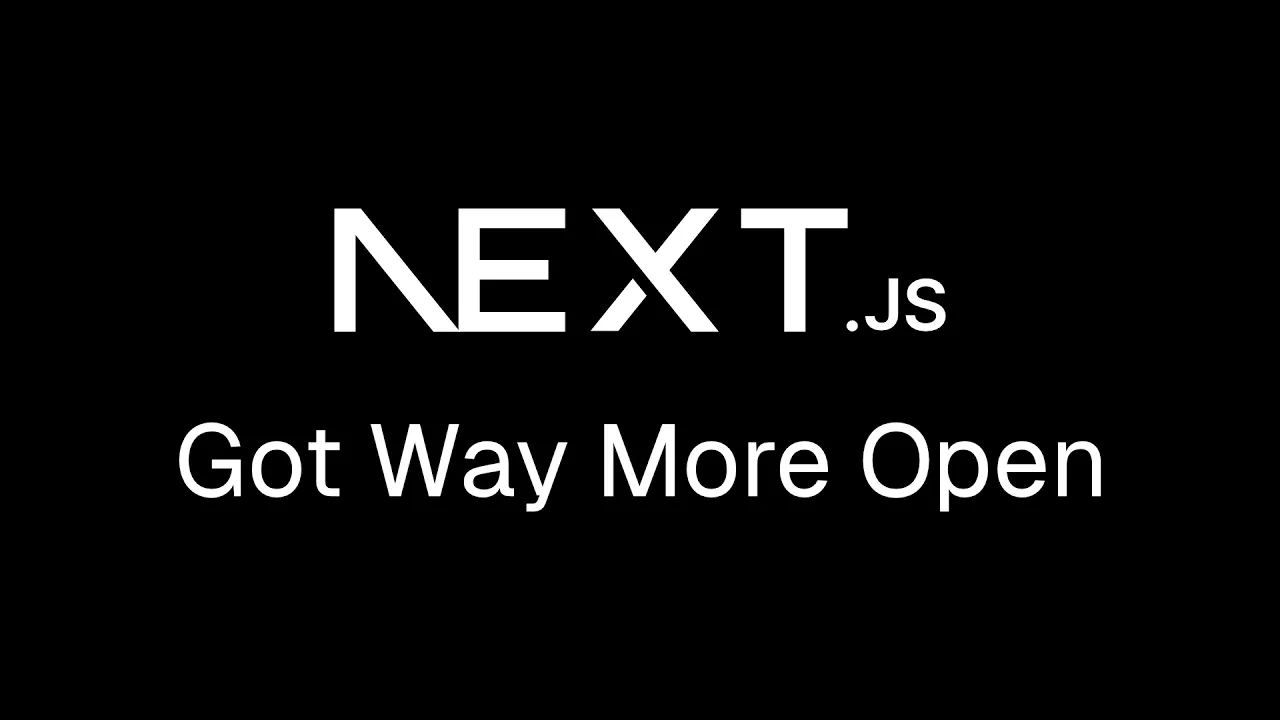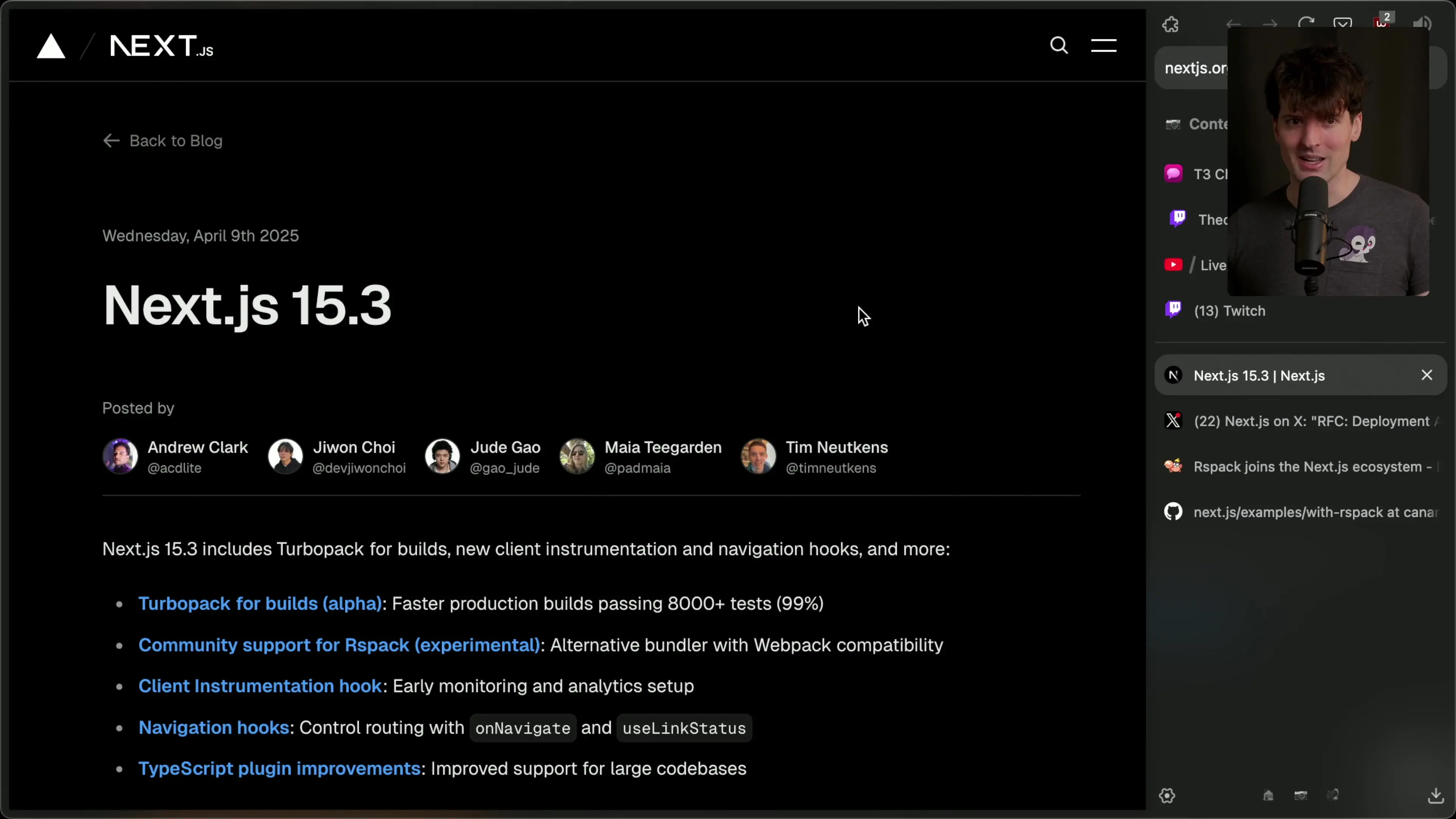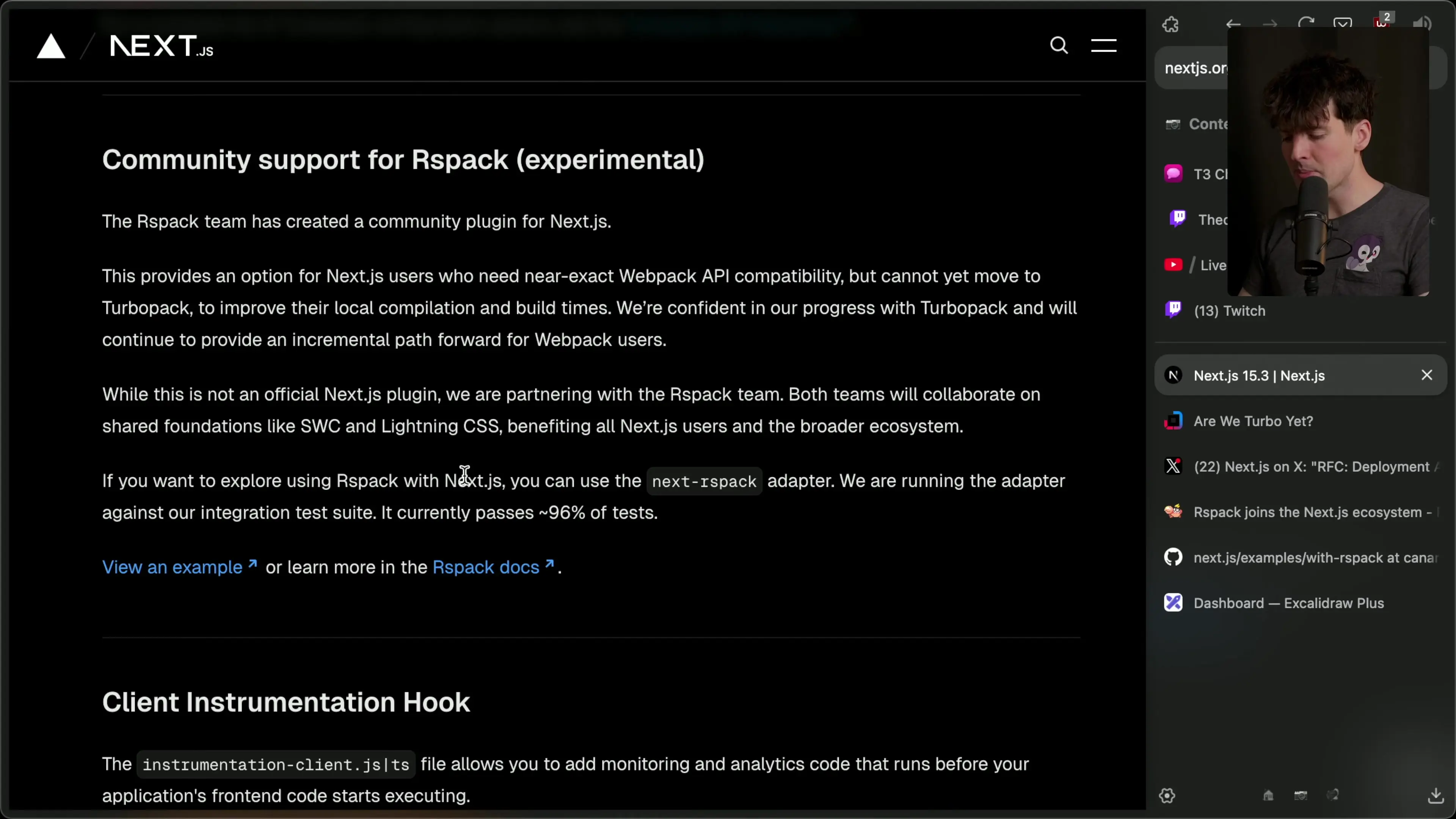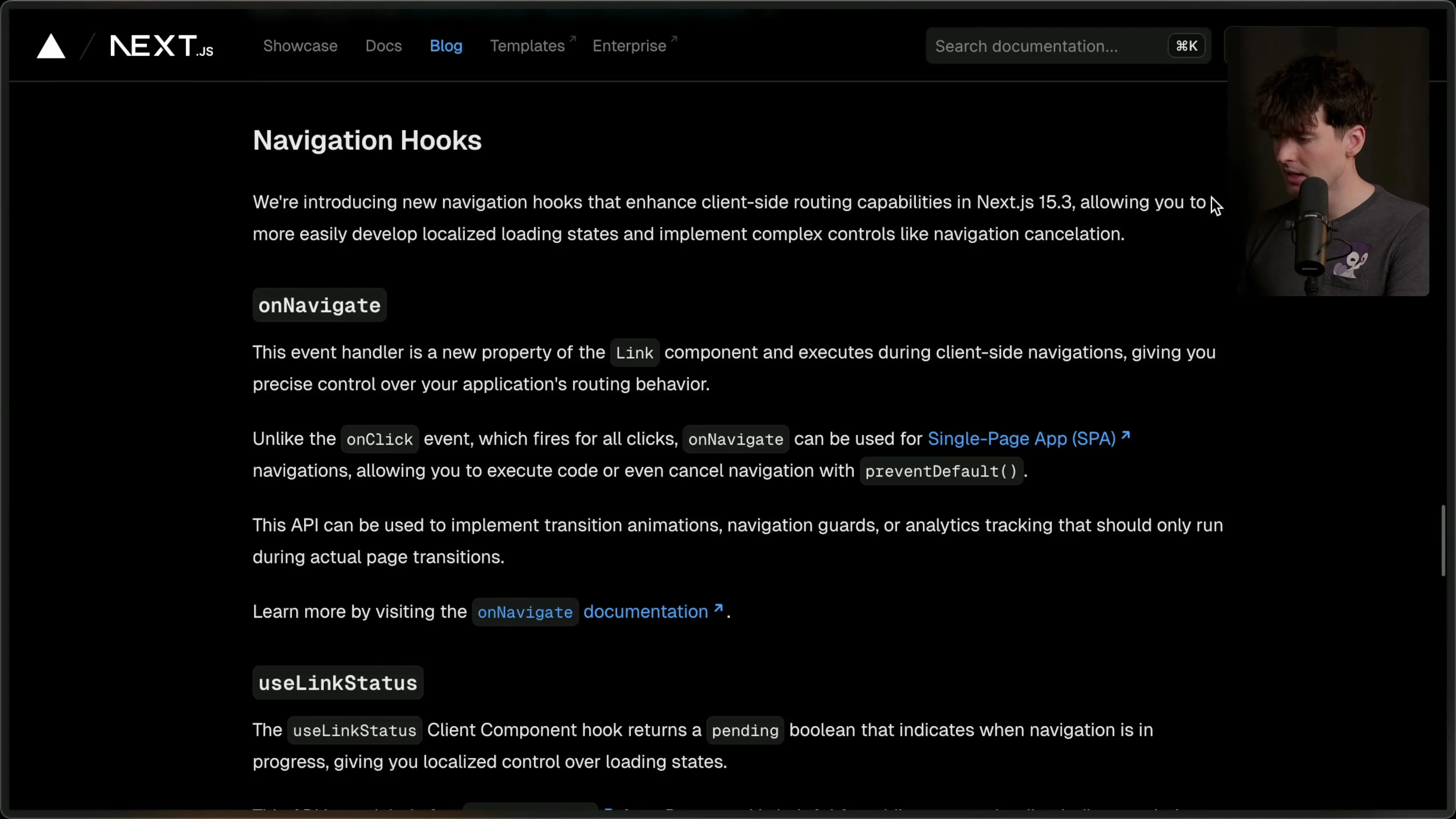
Next.js 15.3 represents a significant turning point in the framework's evolution, addressing performance concerns while expanding developer flexibility. This release brings substantial improvements to build speeds, introduces alternative bundler options, and lays groundwork for greater deployment flexibility—changes that signal a meaningful course correction for the popular React framework.

Turbopack: Finally Ready for Production Builds
The most notable improvement in Next.js 15.3 is Turbopack's alpha support for production builds. After being available for development environments—where it's already used in over half of Next.js 15 development sessions—Turbopack is now taking the next step toward becoming a complete Webpack replacement.
Turbopack's impact on development experience has been transformative, reducing startup times from minutes to seconds and delivering hot reloads in under 100 milliseconds. Now, these performance benefits are extending to production builds with impressive benchmarks:
- 28% faster builds on 4-core systems
- 60% faster builds on 16-core systems
- 83% faster builds on 30-core systems
These improvements stem from Turbopack's Rust-based architecture, which efficiently leverages multi-threading and parallel processing capabilities. While still in alpha (with 57 tests remaining out of 8,095 total tests), Turbopack has matured enough that Vercel is already using it in production internally.
Breaking the Bundler Monopoly: Rspack Support
Perhaps even more surprising than Turbopack's progress is Next.js 15.3's introduction of community support for Rspack, an alternative bundler. This marks a philosophical shift for the framework, moving from a tightly integrated, all-in-one approach toward a more modular architecture where developers can swap out core components.

Rspack, which offers Webpack compatibility with Rust-powered performance, provides developers another option when Turbopack or Webpack don't meet their specific needs. This unprecedented openness signals a new direction for Next.js, embracing community contributions and acknowledging that one solution doesn't fit all use cases.
// Example of enabling Rspack in next.config.js
const withRspack = require('@rspack/next-rspack-plugin')();
module.exports = withRspack({
// your Next.js configuration
});Deployment Adapters API: Next.js Anywhere
Alongside Next.js 15.3, Vercel announced the Deployment Adapters API—a significant step toward making Next.js truly platform-agnostic. While Next.js has always been deployable anywhere Node.js runs, the framework's advanced features like hybrid rendering, edge functions, and asset optimization work best on Vercel's platform.
The Deployment Adapters API aims to bridge this gap by providing a standardized way for other hosting providers to implement the infrastructure needed for Next.js's advanced features. This includes separating and optimizing different types of compute resources:
- API and dynamic page generation on compute instances
- Static asset delivery through CDNs
- Edge computing for middleware and routing
This change acknowledges that while Docker containers work for basic Next.js deployments, they don't provide the infrastructure separation needed for optimal performance. The adapters API gives other platforms a clearer path to offering Vercel-like optimization for Next.js applications.
Enhanced Navigation Hooks for Better UX

Next.js 15.3 also introduces powerful navigation hooks that give developers more control over the user experience during page transitions. These include:
- onNavigate: Provides fine-grained control over SPA routing, allowing developers to execute code before, during, and after navigation events
- useLinkStatus: Enables dynamic UI updates based on link states (idle, pending, loading)
- useNavigationStatus: Offers global navigation state tracking for implementing loaders and progress indicators
// Example of using the new navigation hooks
import { useLinkStatus } from 'next/navigation';
function NavigationLink({ href, children }) {
const status = useLinkStatus(href);
return (
<a
href={href}
className={status === 'pending' ? 'link-loading' : ''}
>
{children}
{status === 'pending' && <Spinner />}
</a>
);
}What This Means for Next.js Developers
Next.js 15.3 represents more than just feature additions—it signals a philosophical shift toward greater modularity, flexibility, and openness. For developers, this means:
- Dramatically faster development and build experiences with Turbopack
- More freedom to choose bundlers and deployment platforms that fit specific project needs
- Better tools for creating polished user experiences during navigation
- A framework that's evolving to be more open to community contributions and alternative implementations
While Next.js has faced criticism over the past couple of years, version 15.3 demonstrates a willingness to address developer concerns and embrace a more flexible architecture. The framework is maintaining its comprehensive full-stack capabilities while becoming more adaptable to different development and deployment preferences.
Conclusion
Next.js 15.3 marks a significant evolution for the framework, balancing performance improvements with greater developer flexibility. By introducing Turbopack for builds, supporting alternative bundlers like Rspack, and creating pathways for better deployment options, Next.js is addressing key pain points while maintaining the integrated experience that made it popular.
These changes suggest a promising future for Next.js—one where developers can benefit from its comprehensive features while having more freedom to customize their stack. For teams already using Next.js, the performance improvements alone make upgrading worthwhile, while the flexibility improvements may entice developers who previously found the framework too restrictive.
Let's Watch!
Next.js 15.3: The Game-Changing Update Every Frontend Developer Should Know
Ready to enhance your neural network?
Access our quantum knowledge cores and upgrade your programming abilities.
Initialize Training Sequence